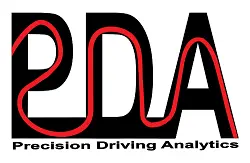Why Steering Data is Essential for Precision Driving
Steering Is Required: The Importance of Steering Data
In the last couple of articles I wrote about different ways to analyze throttle and brake data so it only makes sense to move on to the last driver control — steering. Steering data can definitely tell a lot about how the driver is driving the car and what they are dealing with as far as handling. Steering data is where I see some of the biggest differences between pro drivers and amateur drivers. And the biggest differences usually show up when looking at Steering Velocity which is the derivative of Steering. It shows how fast the driver is turning the steering wheel but it doesn’t indicate how much the driver is turning the steering wheel. For example, Exhibit 1 shows the steering trace and the steering velocity of a pro driver around Watkins Glen. And Exhibit 2 shows the same traces from an amateur driver. Both drivers were driving the same GT race car.
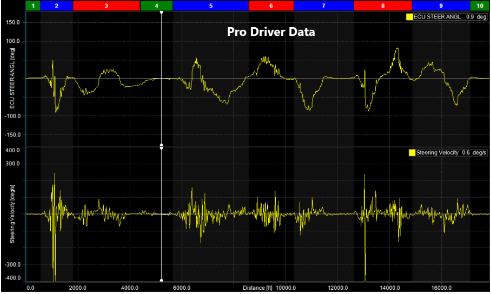
Exhibit 1
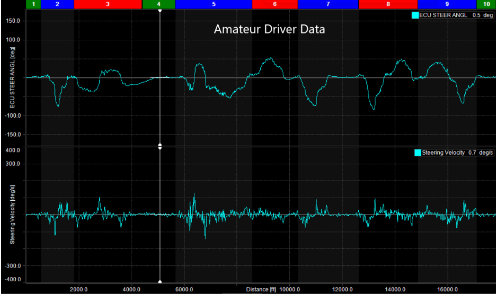
Exhibit 2
By just looking at these four traces, it is easy to see that the pro driver is turning the steering wheel faster than the amateur driver. Btw, the pro driver’s lap time was a little more than 2 seconds faster than the amateur driver’s lap time. But wait, being smooth is supposed to be fast! Clearly the amateur’s steering input is much smoother than the pro drivers steering input. So how can the pro driver be faster? Well, the “smooth is fast” saying is referring to throttle application and brake release more than
steering input. But if you look closely at the start of every corner, you can see that the pro driver is just as smooth as the amateur driver when it comes to the initial steering input at the start of corner entry. As can be seen in Exhibit 3, I have zoomed into turn 1 and overlayed the amateur driver’s data with the pro driver data to show that this is indeed the case. In fact, I would say that the pro driver’s initial steering input is actually a little smoother in this case.
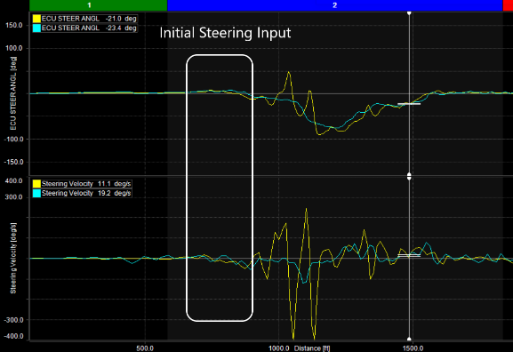
Exhibit 3
The pro driver’s hands become faster when the outside tires are loaded and he can feel the car moving underneath him. The quick hands are necessary to keep the car on the edge of adhesion. In order to see just how hard the driver is working, another steering data graph that I like to look at is Steering Velocity vs Lateral G Velocity. This can be seen in Exhibit 4.
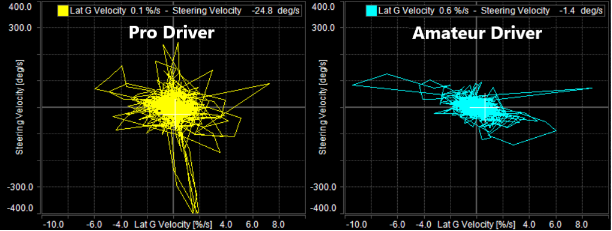
Exhibit 4
Certainly the amateur driver had some moments on this lap but clearly the pro driver had faster hands and was clearly working harder over the lap. Something else stands out to me though. Notice how the pro driver’s graph has more of a ball shape in the center and the amateur driver’s graph is more of an oval shape. This indicates to me that the pro driver is reacting to the car moving underneath him more than the amateur driver is. This is most likely due to the fact that the amateur driver just isn’t as comfortable with the car moving underneath him and is therefore not going to drive the car to that limit
of adhesion until he does get comfortable with it. Of course, having fast hands in the middle of the corner without the need for fast hands isn’t going to cut it. The corner entry speed needs to be fast enough to make the car slide in order for the fast hands to be required.
Many times track reports help people visualize what is going on a little bit better since it is easier to see where an event is happening. Exhibit 5 shows the absolute value of steering velocity of both the pro and the amateur drivers on track reports. When comparing these two track reports, it is clear that the pro driver has faster hands in the middle of the corners but he also had a pretty big moment (as shown in red) before the apex at turn 1.
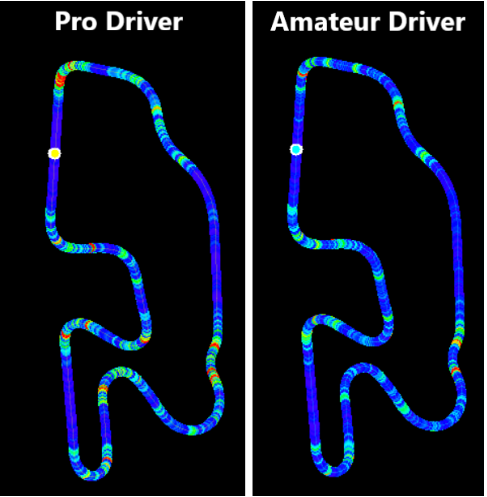
Exhibit 5
I have known many drivers that had throttle and brake sensors but didn’t see the need to have a steering angle sensor. In my opinion, all three of these sensors are important. Hopefully, this article shows why the steering sensor is just as important as throttle and brake. Good luck at the races!
